Sculpting the Sphinx: A Story of Yardangs, Mud Lions, and Erosion
Motivated by a geomorphogenesis problem, L. Ristroph, S. Weady, and myself, started an experimental and numerical study at Courant's Applied Math Lab (AML, at New York University) in 2020. As the project evolved, we won the Milton van Dyke poster award for a poster we presented at the APS-DFD conference in Indianapolis (IN, USA) in 2022. Associated to this award, an invited article has been published in Physical Review Fluids, Sculpting the Sphinx (2023) [1]. An intense media coverage followed this Milton van Dyke award and the article we published in PRF. This page aims at providing some details and clarifications on the original study and on the public outreach that followed.
Context of the Study
Yardangs are a class of landforms found in arid regions, that resemble seated lions, but how and why they take on such shapes is mysterious (see examples in figure 1). Fluid mechanical investigations may provide insights by showing what kinds of formations can be carved by fluidic erosion, and visualization studies can reveal the mechanisms linking the observed shapes to the flows. Our work, of which some aspects are summarized here, aims at investigating this problem.
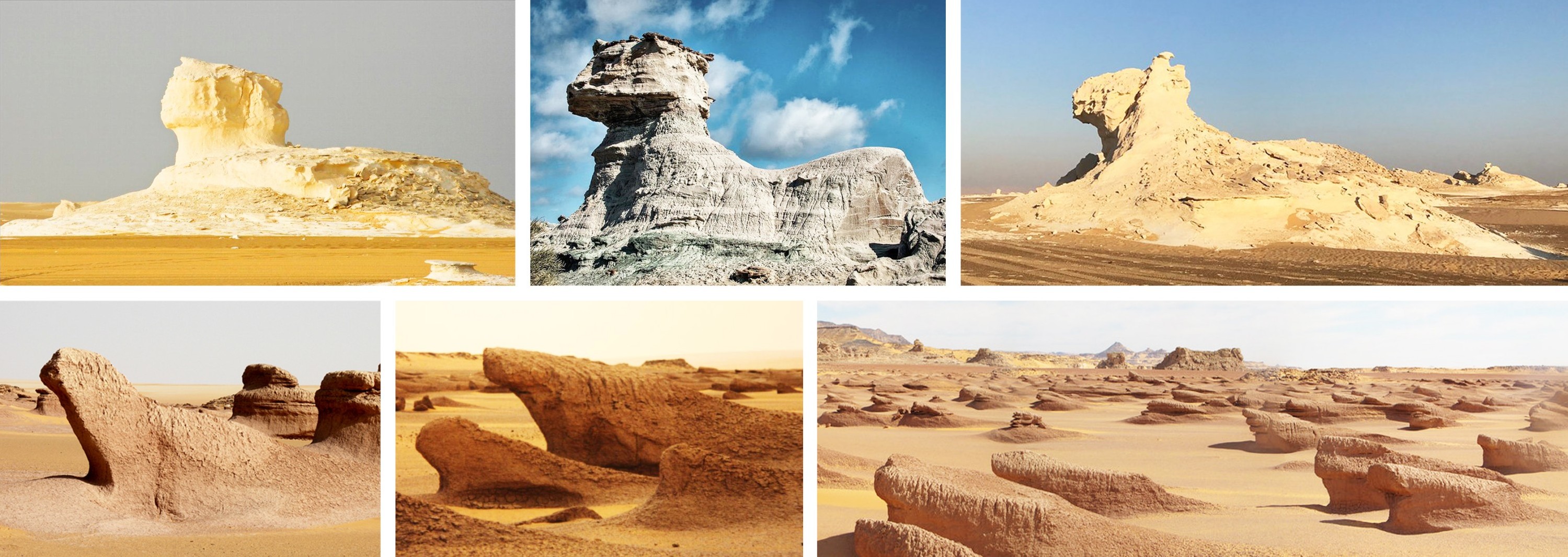
Figure 1 – Examples of natural yardangs from Egypt, Argentina, and Namibia (from [2]). Some common features include a raised "head" or prow that is typically undercut and which sits to one end of an elongated "body" or base extending along the ground. Photograph credits: K. Überschär; K. Olmer; E. Rovielo; M. Welland; J. Stephen; and I. B. Cabral.
Erosion Experiments, Shape Evolution, and Flow Visualization
We proposed a simple model to test the effect of hard inclusions within hillocks of softer clay. We carried out experiments on the fluid mechanical erosion of clay in a water tunnel facility at our Applied Math Lab (AML) at Courant, in order to test this minimal hypothesis. The flow of a water tunnel mimics the prevailing winds in desert environments (here, idealized unidirectional incoming flow). A schematic of the experiment is presented in figure 2: the clay (model) was placed in the visualization section of the water tunnel; a laminar incoming flow eroded the clay; a side camera and an upstream dye release system were added for the purpose of visualizing the flow. In the experiments, the featureless mound transformed into a very peculiar shape reminiscent of yardangs, or mud lions. The cylindrical head was the only inclusion, non-erodible and initially embedded in the soft clay.
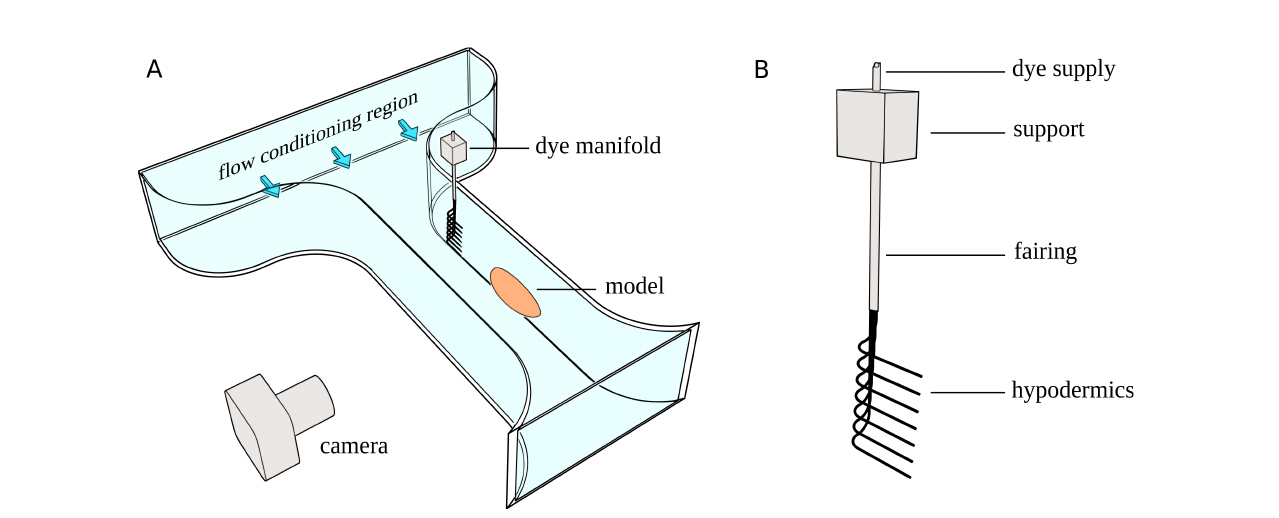
Figure 2 – Schematic of the experimental apparatus (from [2]).
We then studied the flow-structure interactions in two phases: first, while conducting the experiment, we used three-dimensional optical scanning (figure 3) to record the history and evolution of the shape as it was eroding; second, after the erosion experiment, we 3D printed a replica of the eroded body and used flow visualization techniques. Dye added to the clay helped to visualize the turbulent wake that carved the back of the lion (figure 4). Releasing dye upstream revealed compressed streaklines under the head (figure 5); this accelerated flow dug the neck and revealed the forelimbs and paws.

Figure 3 – Temporal evolution of the eroded object, obtained thanks to optical 3D scans performed every 30 minutes (from [2]).
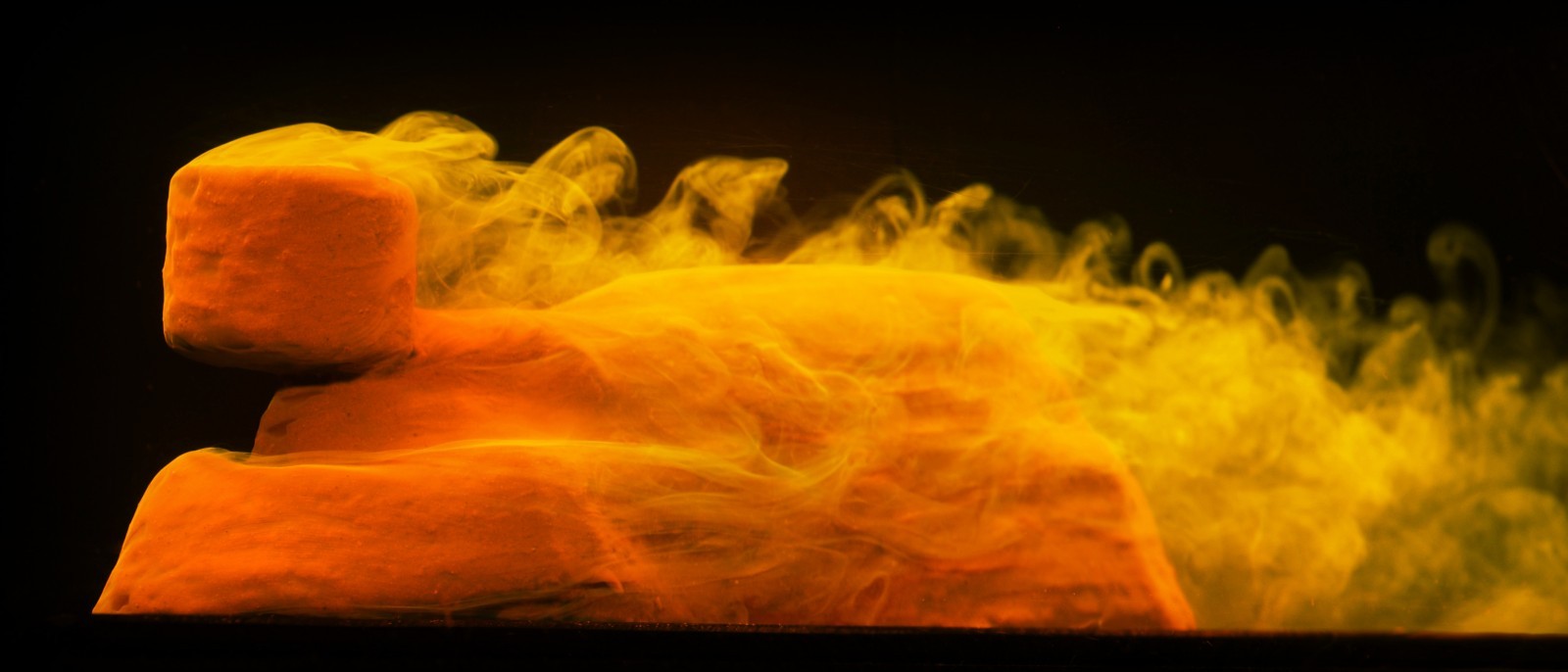
Figure 4 – Visualization of the turbulent wake of the flow interacting with the object while eroding it. The visualization was obtained by applying a thin coat of dyed clay (with fluoresceine) all over a 3D printed replica of the object (from [1]).

Figure 5 – Visualization of the flow streaklines in the vertical (left) and horizontal (right) planes. The visualization was done by releasing concentrated fluoresceine through a home-made manifold located upstream (from [1]).
The findings of our study on the geomorphogenesis of yardangs has been published in two different research articles: a first article in Physical Review Fluids in 2023 [1], following the Milton van Dyke award, focusing on the flow Visualization aspects of the study (wake and streaklines); a second article in Proceedings of the National Academy of Sciences in 2024 [2], with detailed explanations on the context, and results from the experiments and the numerical simulations.
Public Outreach and Media Coverage
Our work has been featured in various media and press articles. Here is a brief chronology of some of them.
2022 – APS-DFD Gallery of Fluid Motion and Milton van Dyke Award
In November 2022, we presented a poster entitled Sculpting the Sphinx at the APS-DFD Gallery of Fluid Motion (GFM), in Indianapolis (IN, USA).
Our poster presented details on the flow visualization performed in the context of our study, with a romanticized story inspired by previous works. As proposed by El Baz [3, 4], the Great Sphinx could have been a natural landform before its surface features were chiseled by the ancient Egyptians; but is this controversial theory plausible? Beyond this theory, ancient Egyptians could have been inspired by yardangs of various sizes and shapes found in the desert to carve the Great Sphinx.
This work was awarded the GFM's Milton van Dyke poster award. A brief two-page article detailing the flow visualization techniques was published, under the same title Sculpting the Sphinx, as an invited entry in Physical Review Fluids (2023).
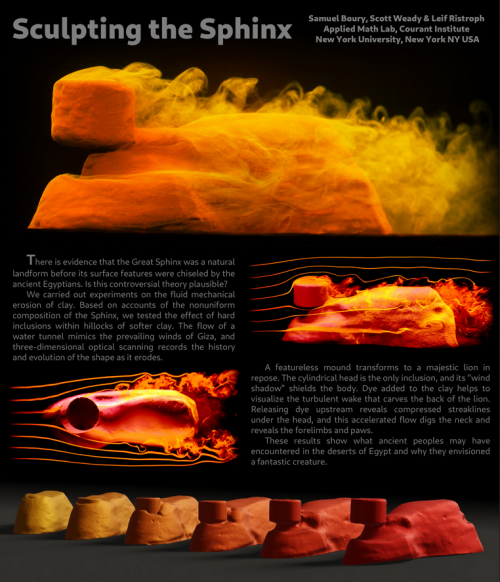
2022-2023 – Press Releases and "Sphinx-oriented" Articles
After our poster had won the Milton van Dyke award, the American Physical Society (APS) issued a press release, shortly followed by New York University's news release. These communications were almost immediately echoed in various science-oriented journals, for instance in Phys.org, in the Smithsonian Magazine, and Scientific American. Large audience media like CNN also covered this research. Outside the US, various media and magazines wrote short articles to cover this study, including Scientas in the Netherlands, Geo and Ça m'intéresse in France, and Le Journal de Montréal in Canada, to name but a few. Short movies were also published online to comment on our work, like from The Huffington Post. More dramatic articles were also published in several newspapers such as The Sun and Daily Mail. These are only a few examples; a quick search on Google will help you find more of them.
2024 – Student Project at the National Museum of History in NYC
Over the 2023-2024 academic year, we collaborated with a team of graduate students from NYU's Tisch School of Arts. As part of their class Playful Communication of Serious Research, Cindy, Chumou, Georgia, and Sam, crafted an interactive installation to be temporarily displayed at the National Museum of History in New York (NY, USA). They crafted an impressive Erosion Lab along with panels explaining our study and its impact: a conveyor belt carries a 3D printed mound of material, initially half-ellipsoidal; the mound enters a "black box" with a screen showing 3D renderings while the user can tune several parameters like the heterogeneity of the material, the strength of the wind, or the duration of the experiment; finally, the eroded shape leaves the box and resembles, in some cases, to... a yardang! They thus developed a very nice tool to present our work in a playful way to a large, non-scientific audience.
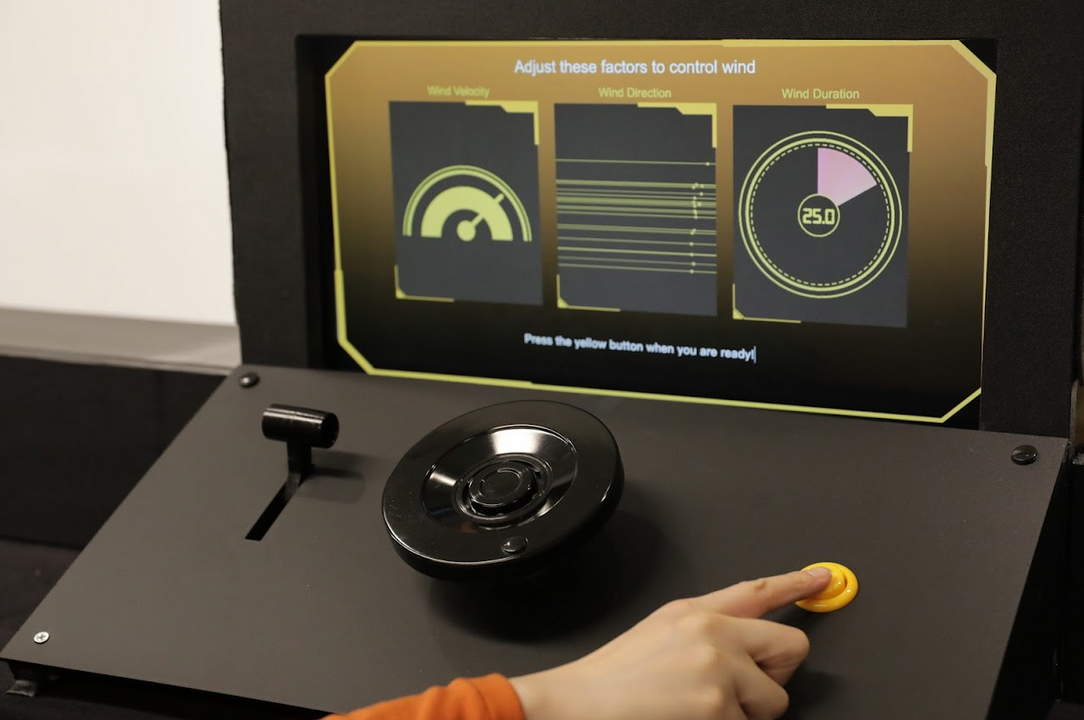
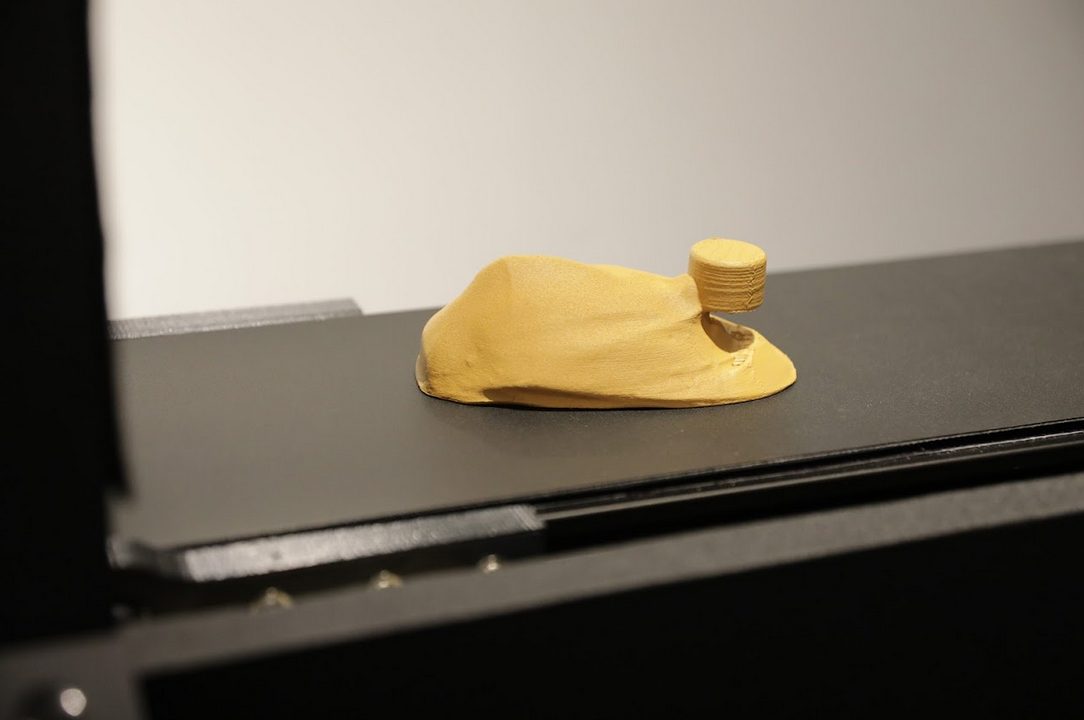
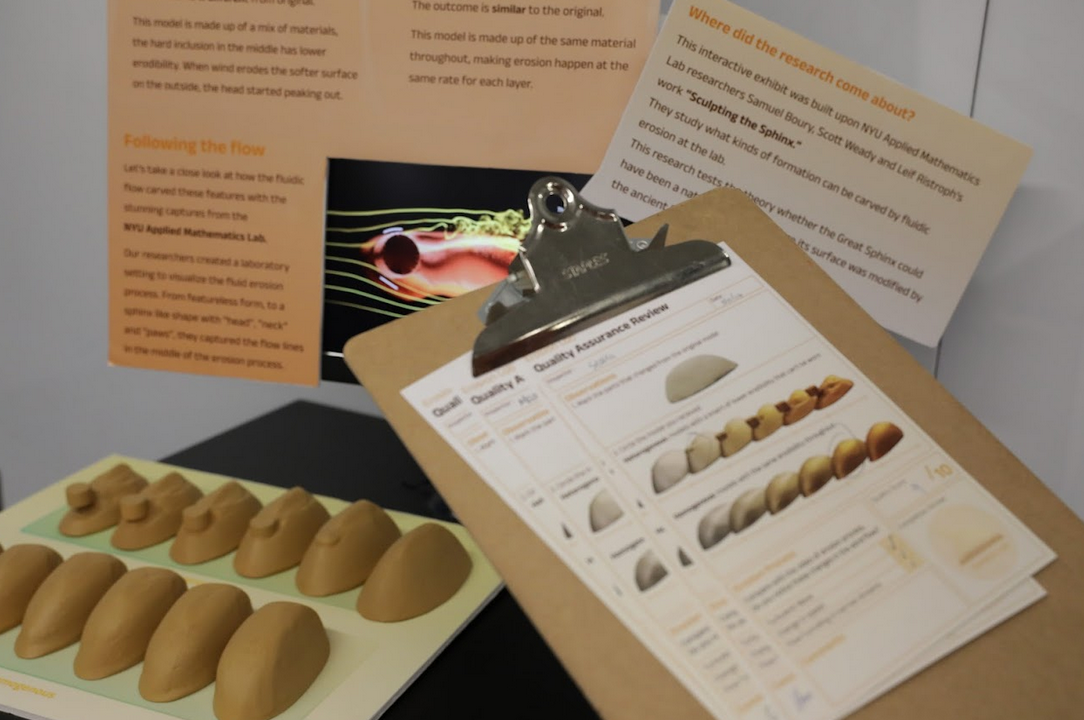
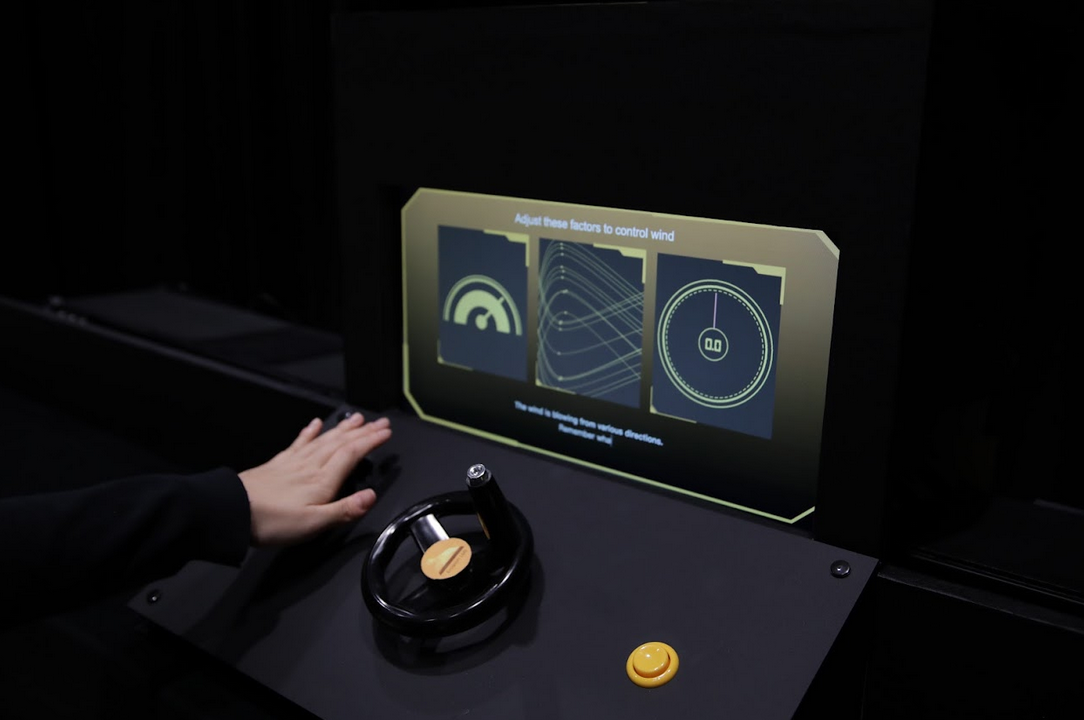
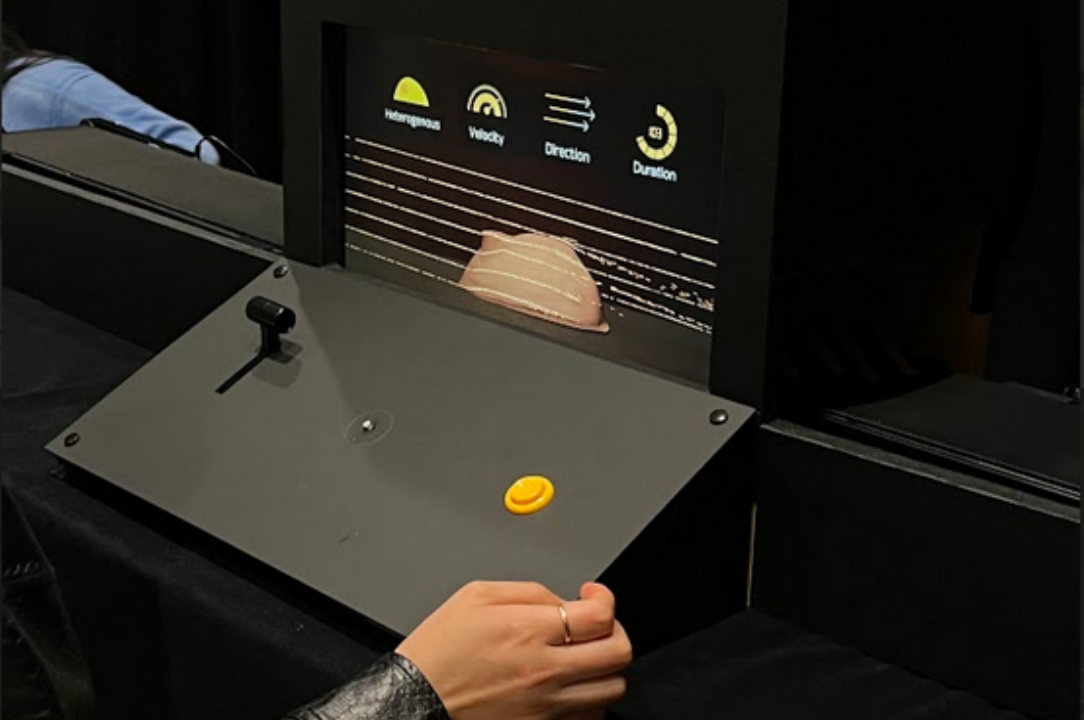
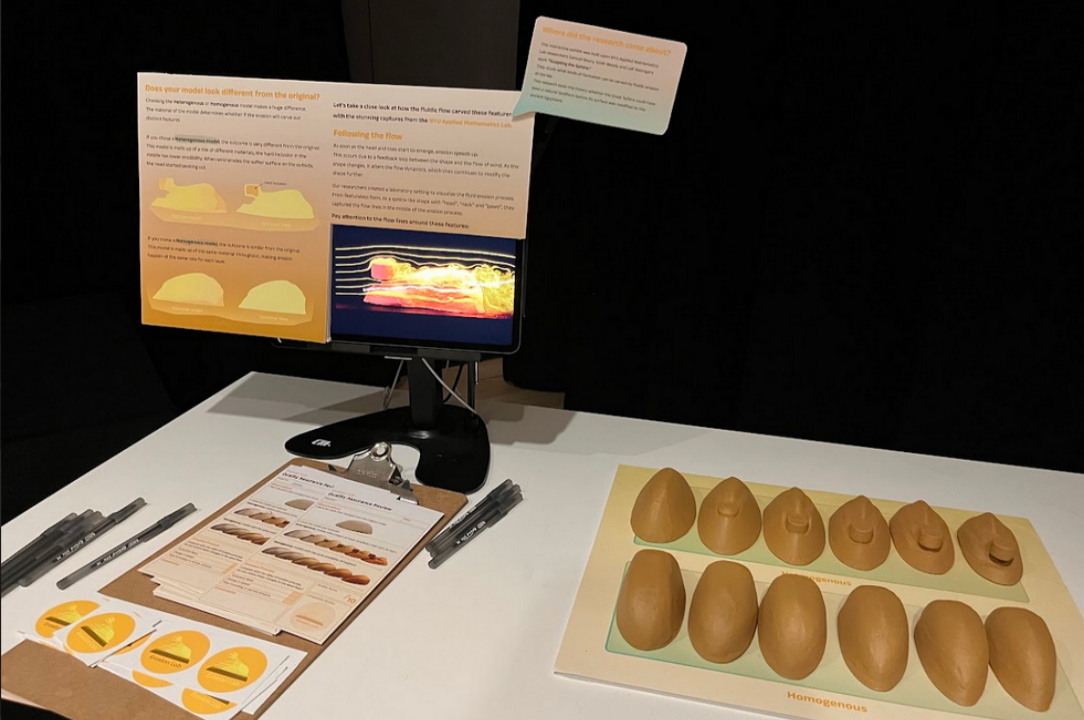
Figure 6 – Exclusive photographs of the installation, during its design and first presentation (near final stage).
2024 – Proceedings of the National Academy of Sciences
In July 2024, our detailed study (including both lab experiments and numerical simulations) was published in Proceedings of the National Academy of Sciences (PNAS) as Yardangs sculpted by erosion of heterogeneous material. This work was also selected to be featured in cover of PNAS!
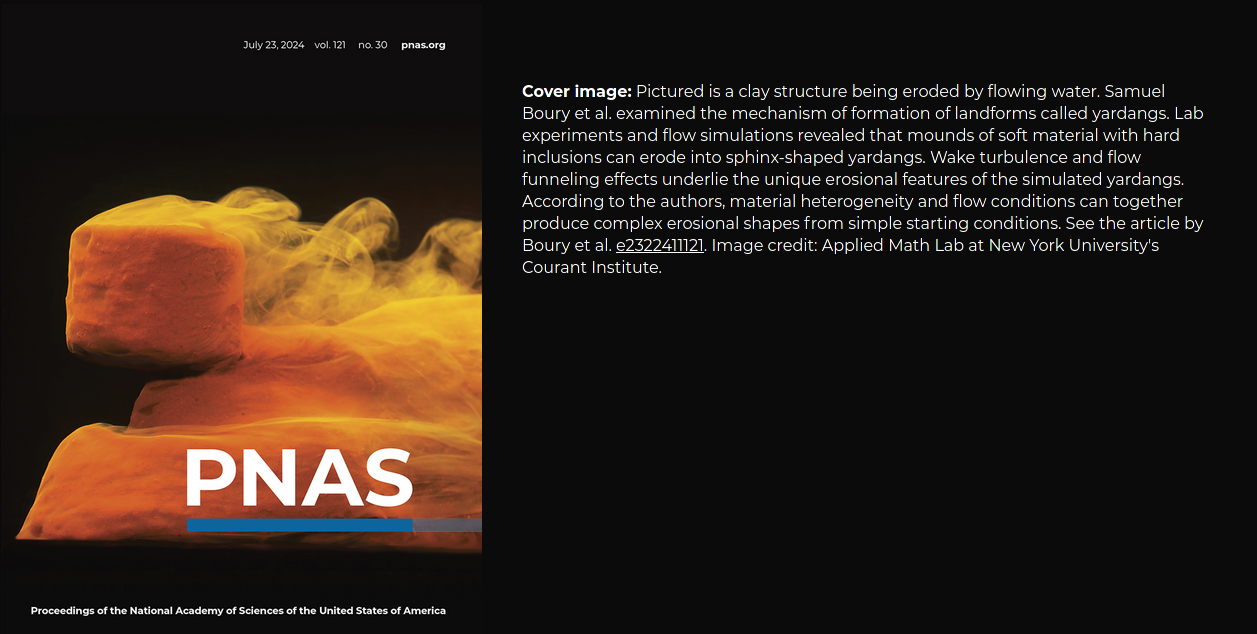
2024 – Additional Press Articles
Other wide audience articles were issued following the PNAS publication, for instance in the French magazine Pour la Science (La forme du Sphinx est-elle d'origine naturelle ? Une simulation de la formation des yardangs relance l'hypothèse).
2024-20XX – More to come?
Our work is out there, published in PRF and PNAS. What happens next is beyond the scope of our study!
Bibliography
| # | References | |
|---|---|---|
| [1] | S. Boury, S. Weady, and L. Ristroph. Physical Review Fluids, 8, 110503 (2023). Sculpting the Sphinx. | |
| [2] | S. Boury, S. Weady, and L. Ristroph. Proceedings of the National Academy of Sciences, 121, e2322411121 (2024). Yardangs sculpted by erosion of heterogeneous material. | |
| [3] | F. El-Baz. Smithsonian, 12, 116 (1981). Desert builders knew a good thing when they saw it. | |
| [4] | G. Gerster and F. El-Baz. National Geographic, 161, 190 (1982). Egypt's desert of promise. | |
Page adapted from Boury et al., Sculpting the Sphinx (Physical Review Fluids, 2023) [1] and Boury et al., Yardangs sculpted by heterogeneous erosion (Proceedings of the National Academy of Sciences, 2024) [2].
CONTACT INFO
Email: sbry.phy@gmail.com
Office: Université Paris Cité Laboratory Matière et Systèmes Complexes (MSC) -- UMR 7057Bâtiment Condorcet -- Office 841A10 Rue Alice Domon et Léonie Duquet75013 Paris (France)
